My Tesla Powerwall Experience
25 March 2023
I have been asked about my experience with the Tesla Powerwall. So, here’s a post that will dive into the details of our Powerwall installation in Wellington, New Zealand, its integration with solar panels, energy management, and how it has impacted our daily life since we had it installed.
Components of the Tesla Powerwall System
The Tesla Powerwall system consists of several components that work together to provide an efficient energy storage solution. In this section, we’ll explore each component in detail and share photos of our setup.
The Powerwall
The Powerwall is the main component of the system, responsible for storing energy from the solar panels or the grid. The unit can be mounted either indoors or outdoors and has a durable construction to withstand various weather conditions. Here’s a photo of our Powerwall installed on the side of our house:
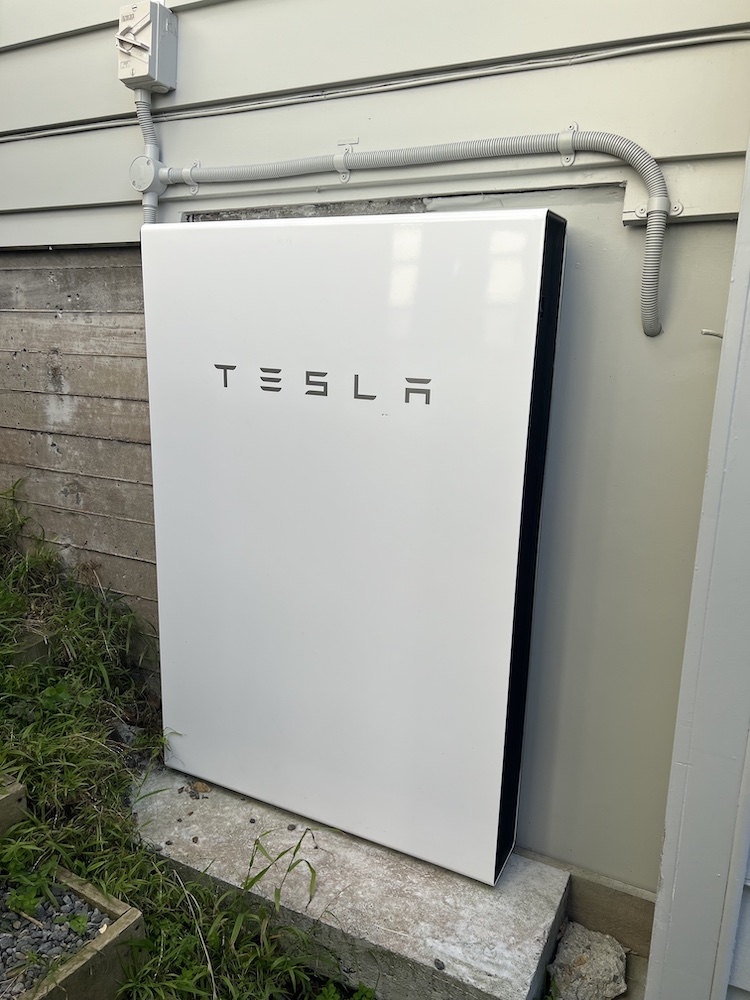
Home Gateway
The Home Gateway is the communication hub of the Powerwall system, connecting the Powerwall, inverter, and Tesla app. It monitors and controls the energy flow between the grid, solar panels, and the Powerwall. Our Home Gateway is installed on the opposite side of the house from the Powerwall, and they are connected by cabling. Here’s a photo of our Home Gateway:
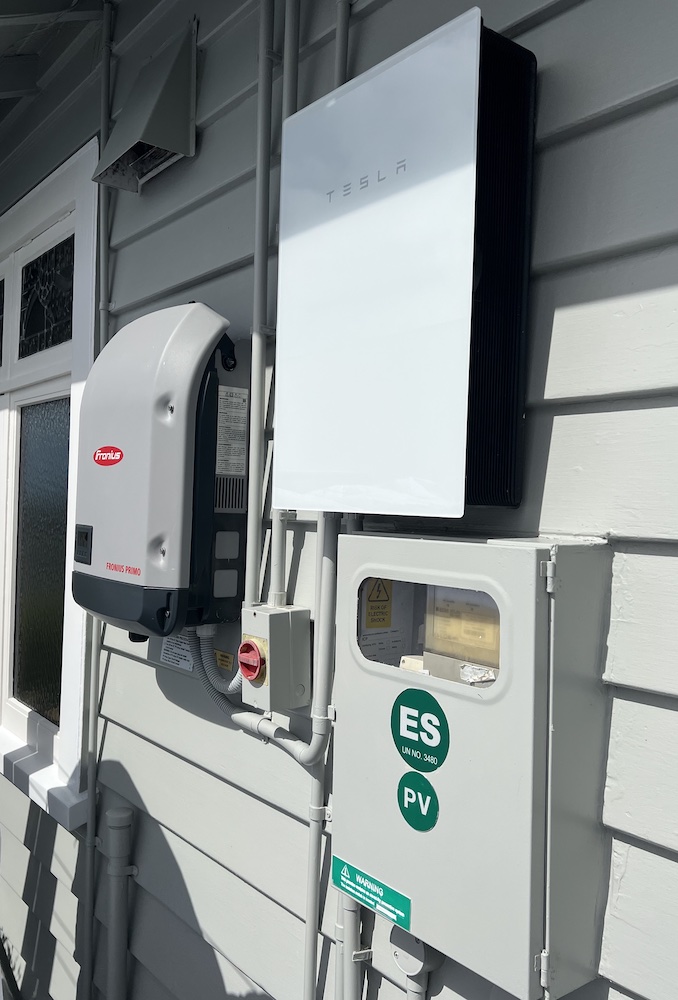
Solar Panels and Inverter (Non-Tesla Devices)
The solar panels and inverter work together to convert sunlight into usable electricity for the home and to charge the Powerwall. While these are not Tesla-branded devices, they integrate with the Powerwall system, making the entire setup efficient and cohesive.
In summary, the Tesla Powerwall system comprises the Powerwall, Home Gateway, solar panels, and inverter, which work together to provide an efficient and integrated energy storage solution.
Battery Behavior
In automatic cost-saving mode, the Powerwall seems to be quite an intelligent device. It autonomously charges during off-peak hours when electricity rates are lower in New Zealand (in our case, 16c per kWh). Then, it discharges the stored energy during peak periods, such as at breakfast and dinner times, helping us save on our energy bills (normally 32c per kWh during the peak period).
Solar Panel Integration and Exporting Power
The Tesla Powerwall works hand-in-hand with our solar panels. Wellington’s surprisingly generous number of sunshine hours makes solar power a viable and efficient option for homeowners in the region.
The Powerwall charges during the day from the panels, but occasionally it does something interesting. Since we get paid a higher rate for electricity export (18c / kWh), the system occasionally exports power to the grid instead of fully recharging the battery. This not only increases our savings but also contributes to a cleaner grid.
Environmental Impact
By using the Tesla Powerwall in conjunction with our solar panels, we’ve been able to significantly reduce our carbon footprint. This battery system allows us to store and use clean energy from the sun, decreasing our reliance on grid electricity. New Zealand’s relatively clean energy grid means that even when we’re drawing electricity from the grid, we’re contributing less to carbon emissions compared to many other countries. Additionally, peak power periods tend to rely more on dirtier generation sources. By avoiding these periods and instead consuming grid energy during the night, we further reduce our carbon footprint. The combination of the Powerwall, solar panels, and mindful energy consumption habits work together to create a more environmentally friendly and sustainable lifestyle.
Long-term Savings and Return on Investment
While the initial cost of the Powerwall and its installation might seem high, the long-term savings on energy bills make it a sound investment. As electricity prices continue to rise, the Powerwall’s ability to store and manage energy efficiently will become even more valuable. The variable electricity pricing system in New Zealand allows for greater cost savings when using the Powerwall. By charging the battery during off-peak hours when electricity rates are lower, and discharging the stored energy during peak periods, we can maximize our savings on energy bills.
Additionally, the increased property value due to the installation of a solar and battery system should not be overlooked.
Reduced Energy Bills and Accumulated Credits
One of the most significant benefits we’ve experienced since installing the Tesla Powerwall is the substantial reduction in our energy bills. Due to the efficient management of energy from our solar panels and the battery, we’ve been able to accumulate a credit with our power company.
By the end of March, we will have accumulated a credit of $270, which we will use during the cooler months when our solar production is lower. This credit will likely cover our electricity expenses until at least the end of May. As a result, we only anticipate paying for electricity for approximately six months of the year.
The ability to offset our energy costs during the winter months using credits accumulated throughout the year is an incredible advantage. It demonstrates the value of the Tesla Powerwall as a sustainable investment for our home.
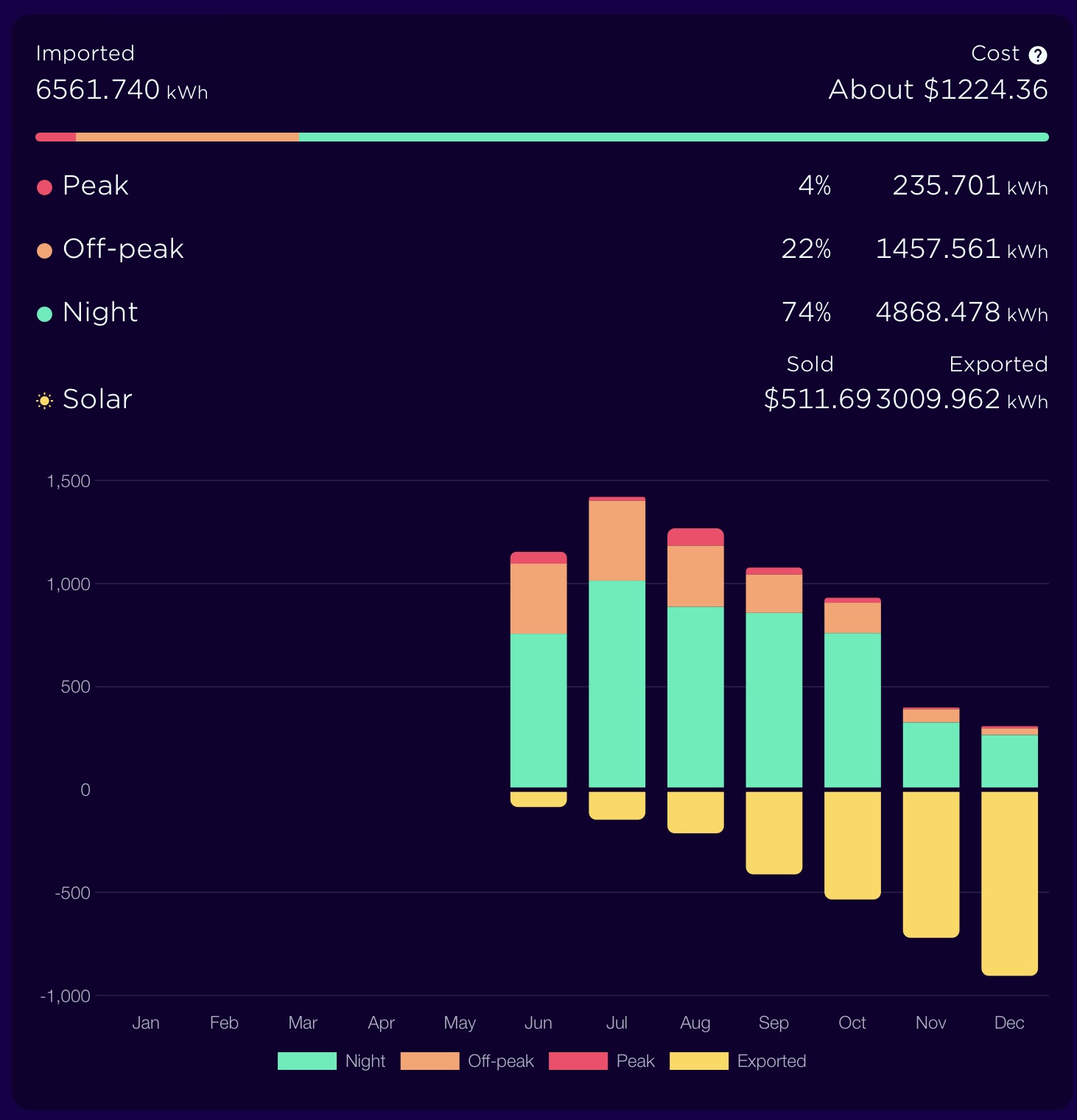
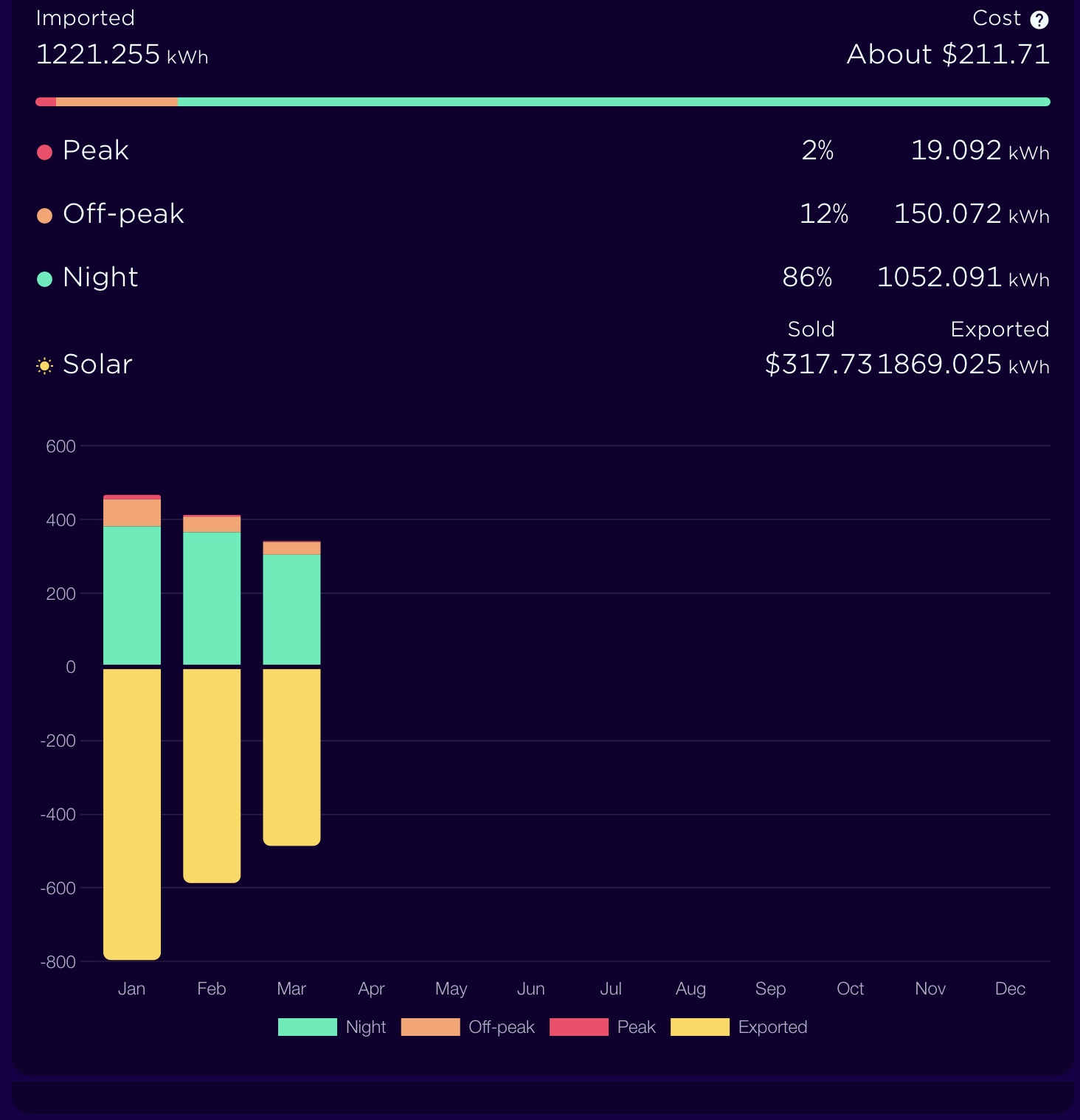
Energy consumption and generation grouped by peak, off peak and night rates. Solar export in yellow.
Adapting our Energy Usage Habits
Since installing the Tesla Powerwall, we’ve become more conscious of our energy usage patterns. We’ve learned to schedule energy-intensive tasks during periods of high solar production or when the battery has ample stored energy. This mindful approach to energy consumption has not only increased our savings but also made us more environmentally responsible in our daily lives.
App Connectivity and Control
The Tesla app allows us to monitor and control our Powerwall easily. With real-time data on solar production, battery charge levels, and household energy usage, we can make informed decisions about how to use and store energy.
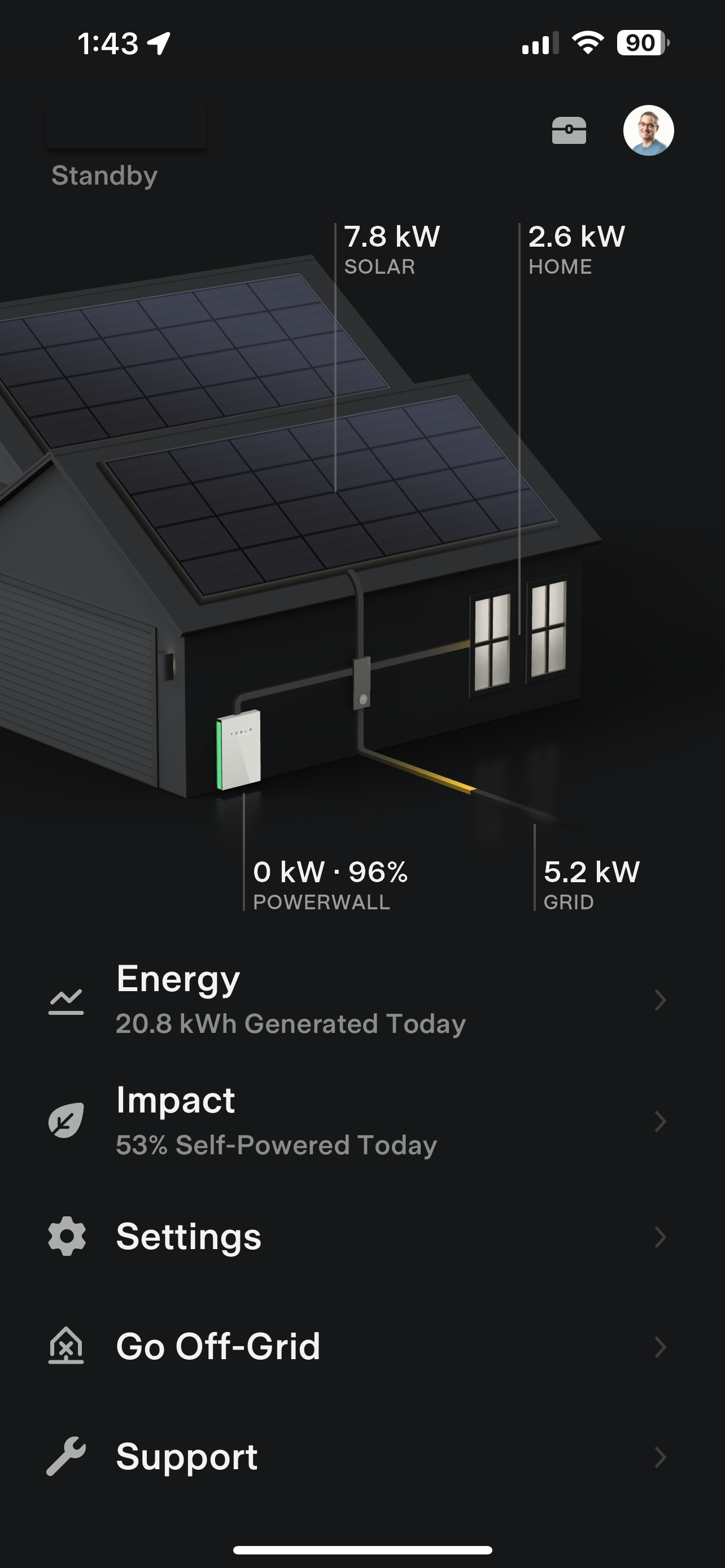
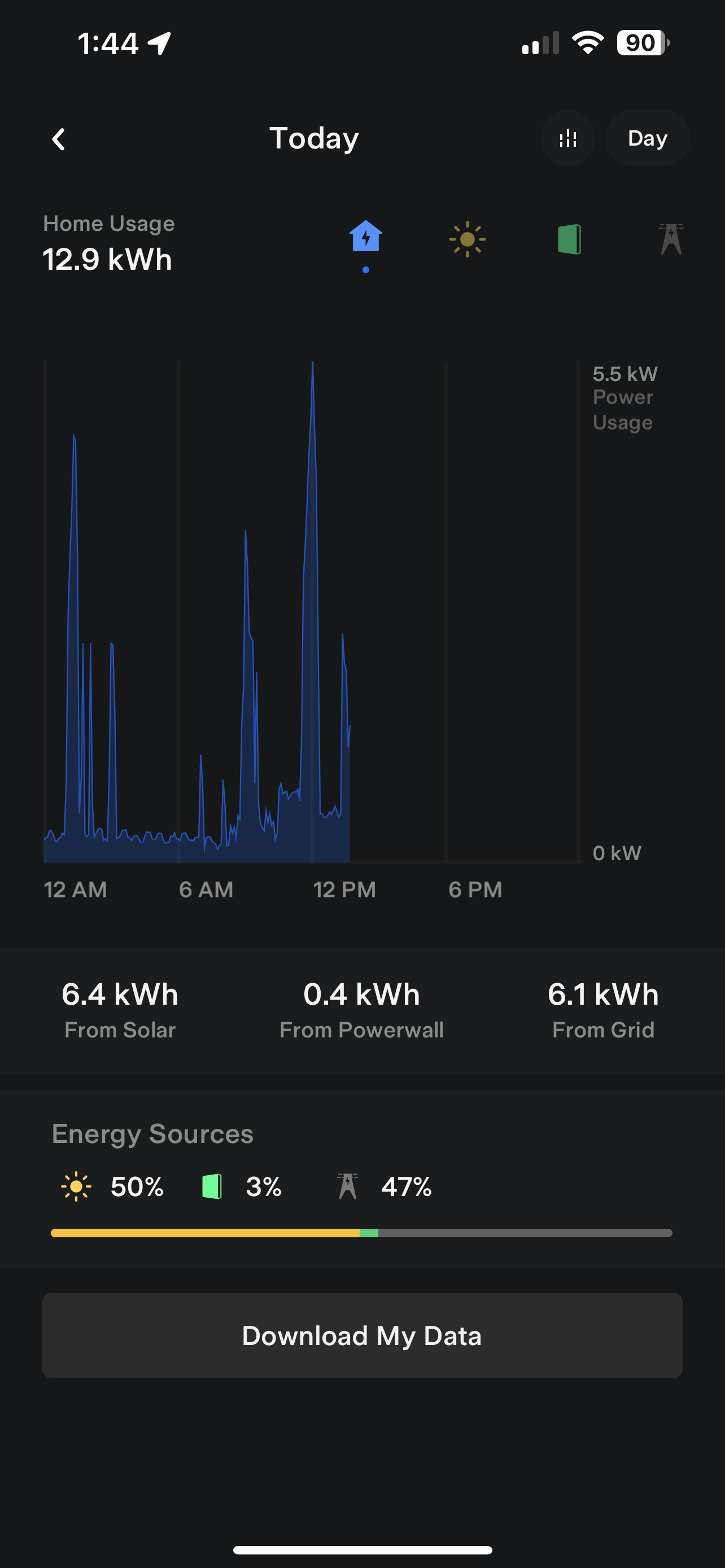
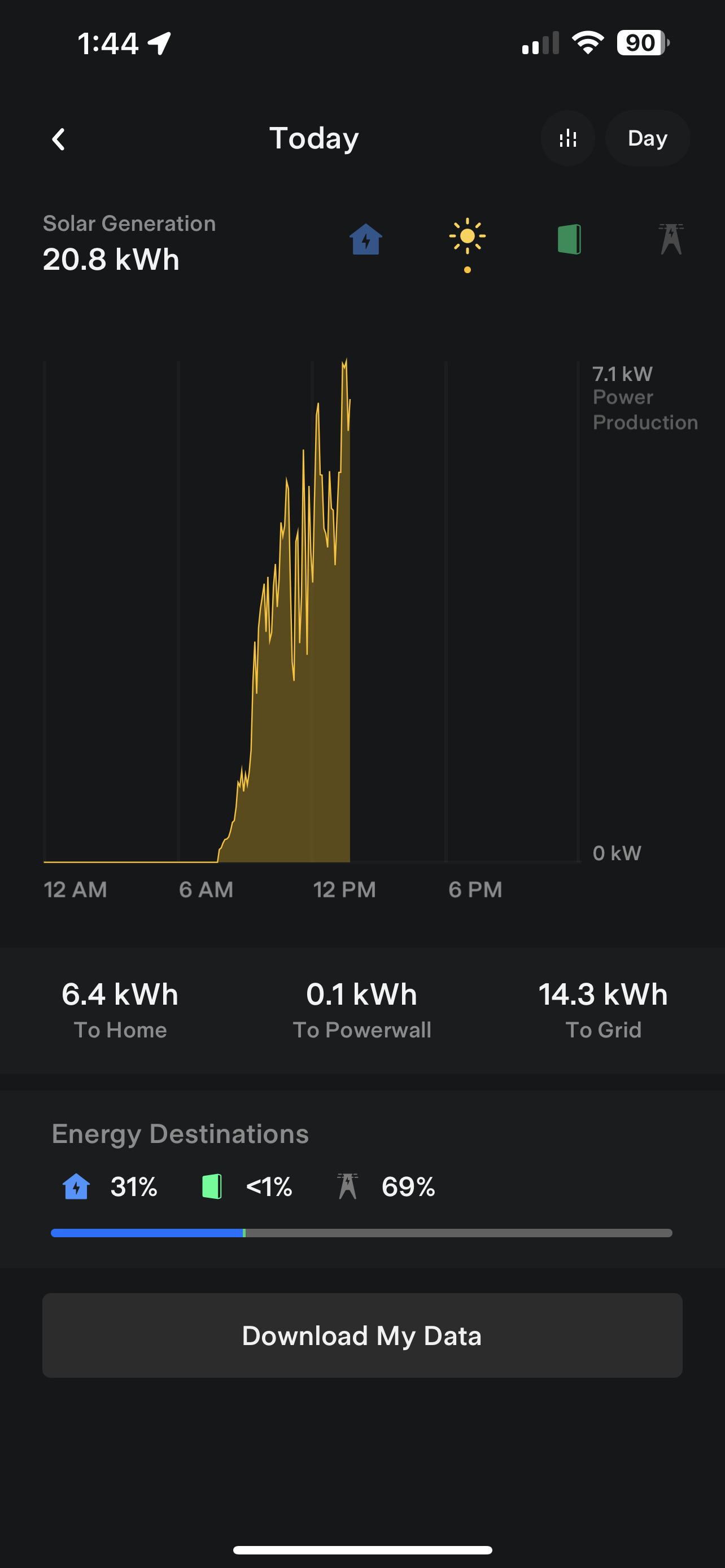
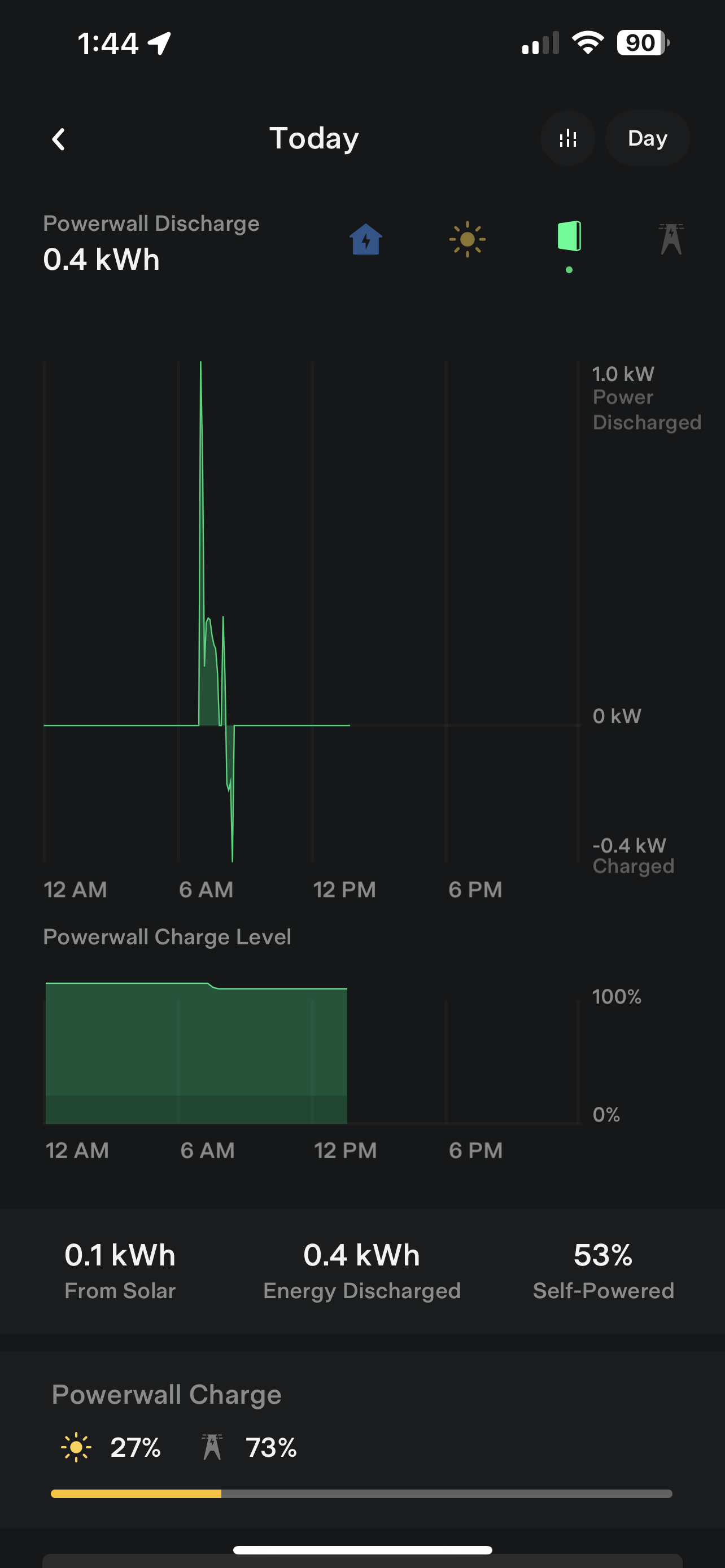
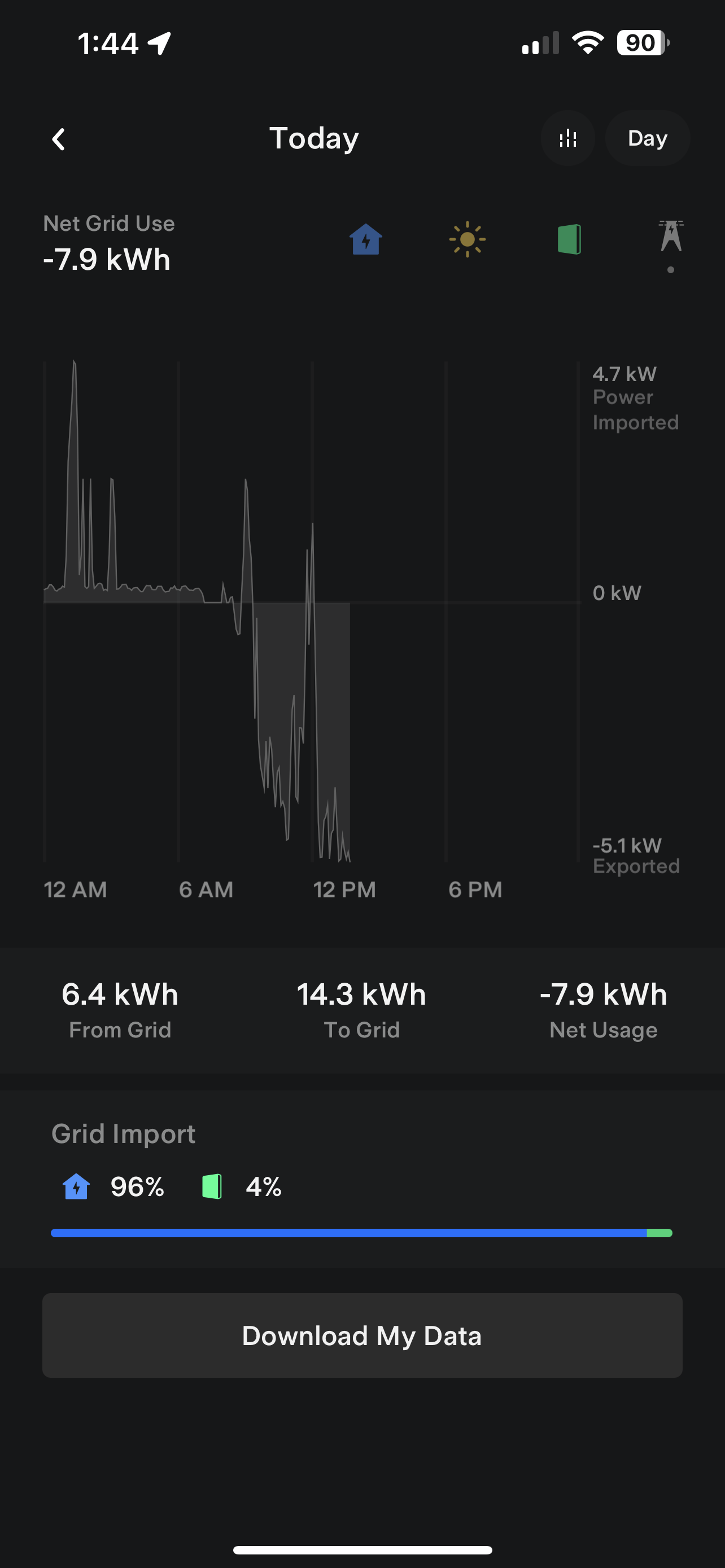
A particularly impressive aspect of the Tesla app is that it is regularly updated and improved. The UI and some the functionality has been extended over the last 12 months, and there is the possibility of joining the Telsa Virtual Power Plant at some point in the future.
Backup Power Supply
Wellington is occasionally susceptible to power outages due to storms and other weather-related events. The Tesla Powerwall has offered us dependable backup power during such occurrences. Depending on the time of year and the time of day, we can operate all of our appliances and heating either continuously (in summer) or for up to 3-4 hours (on cold winter nights). We also have the option to charge our electric car. In today’s world, where extreme weather events are becoming more frequent and the security of petroleum supply lines is uncertain, it’s reassuring to know that we have additional, reliable energy options.
Conclusion
Our Tesla Powerwall experience has been overwhelmingly positive, and it has brought significant value to our home and daily life. The intelligent cost-saving features, solar panel integration, reliable backup power, and environmental benefits make the Powerwall a good investment. For those living in Wellington and throughout New Zealand, the Tesla Powerwall is an option that could transform your energy consumption, reduce your carbon footprint, and create a more sustainable and dependable living experience while providing a sound financial investment in your property.
Credits
Credit to ChatGPT 4 for helping write this article.
Related posts
- Review of the Mitsubushi Ecodan
- All about solar panels
- Four years of household energy costs and emissions
- Comparison of fossil-fuel with electric-only energy costs for spring
- Household energy costs comparison for winter
- Price Comparison of Electricity and Gas
- Energy efficiency after 1 week
- Conversion of gas central heating to electric
- Recording our carbon footprint at home
- Please don’t wait for the Politicians